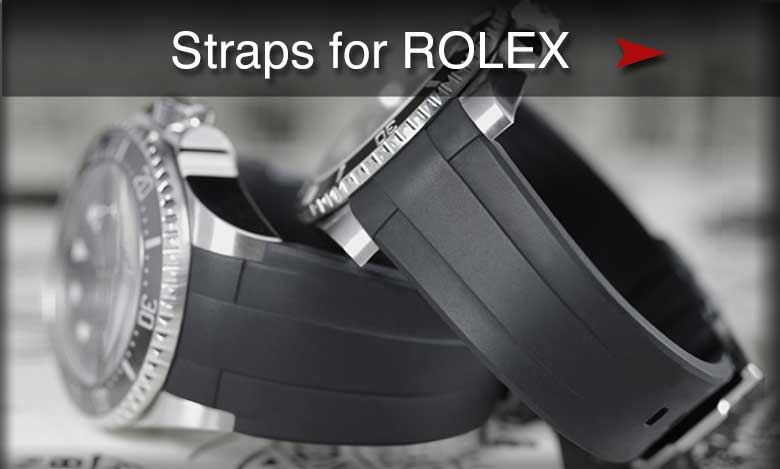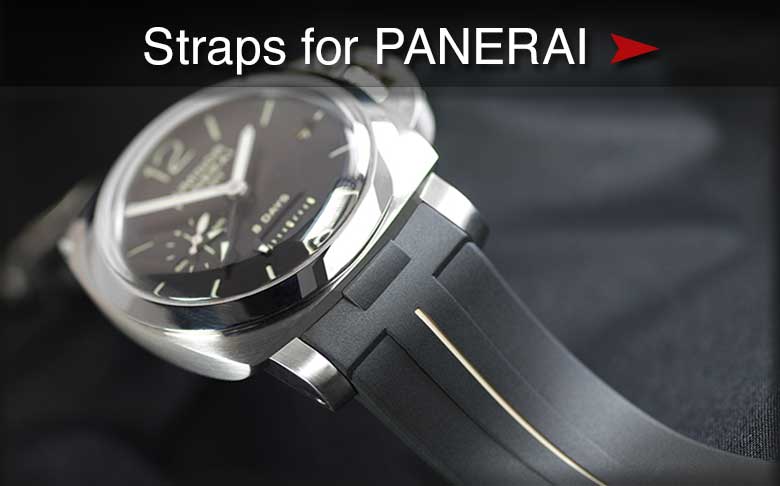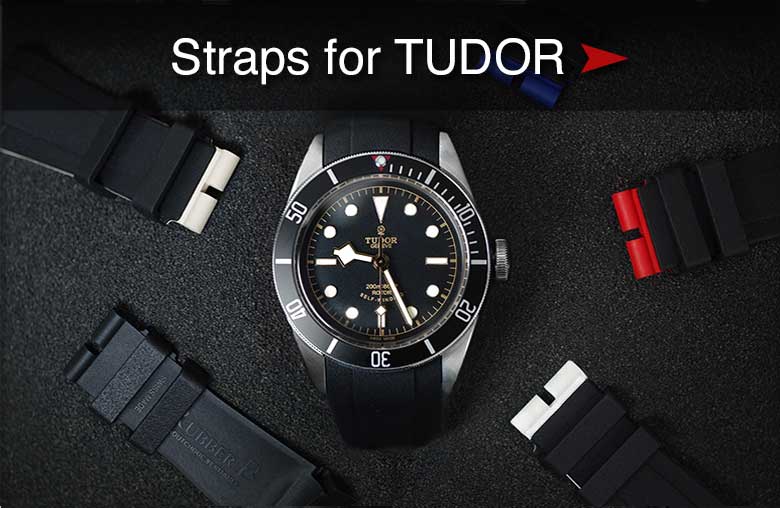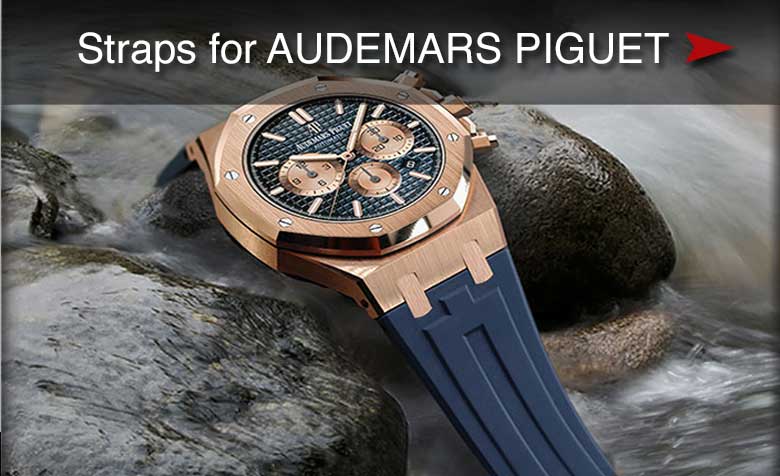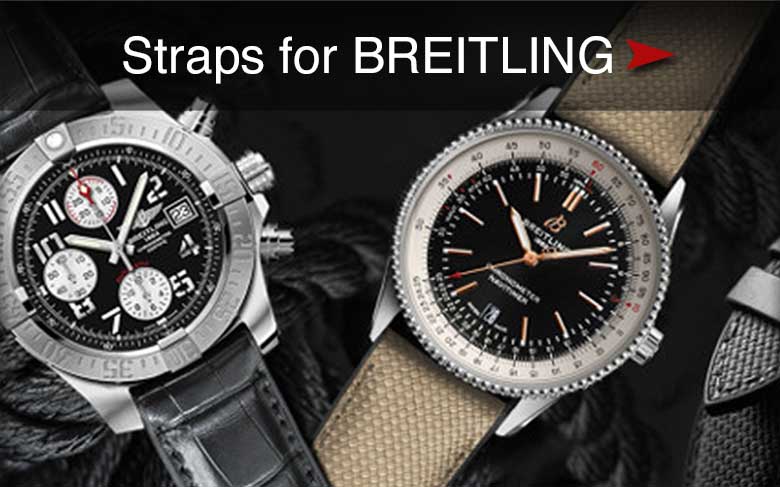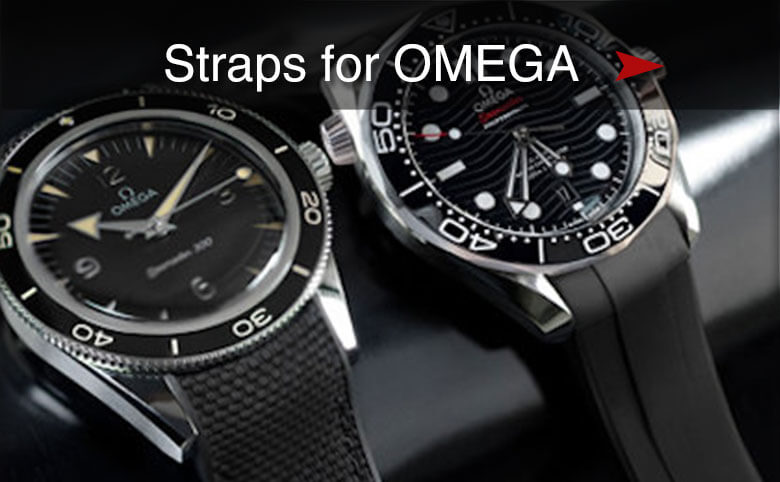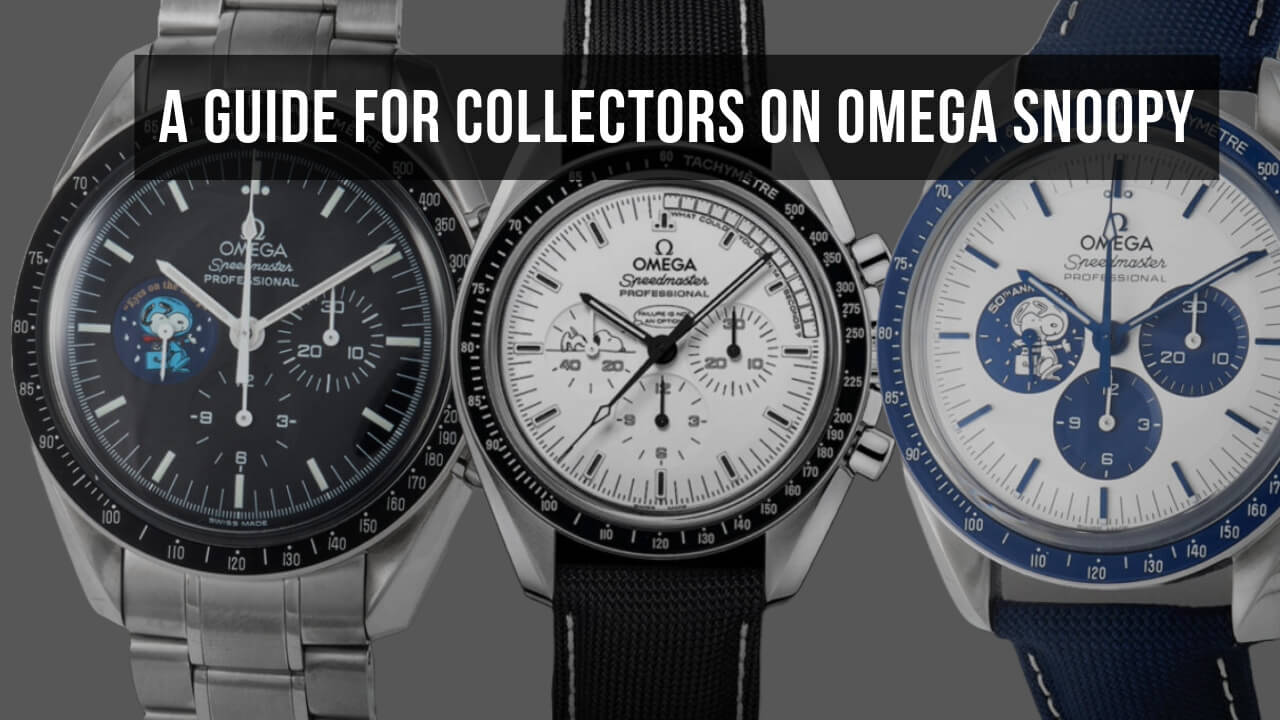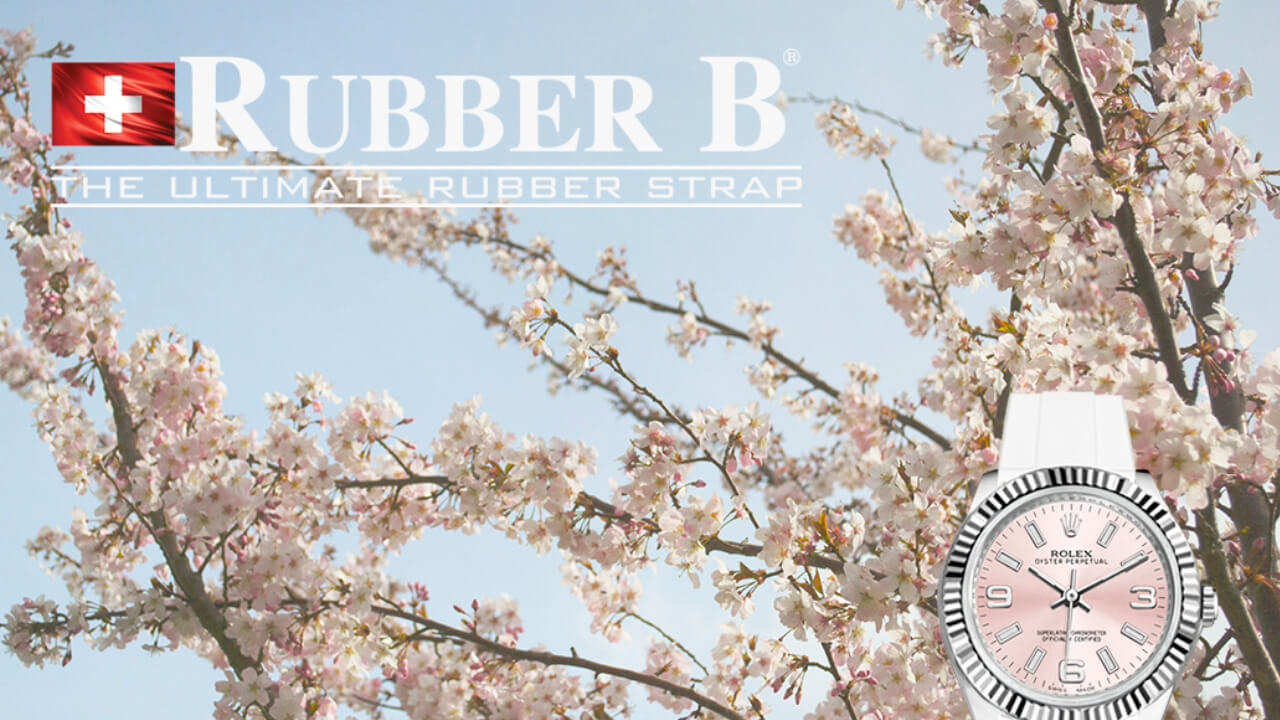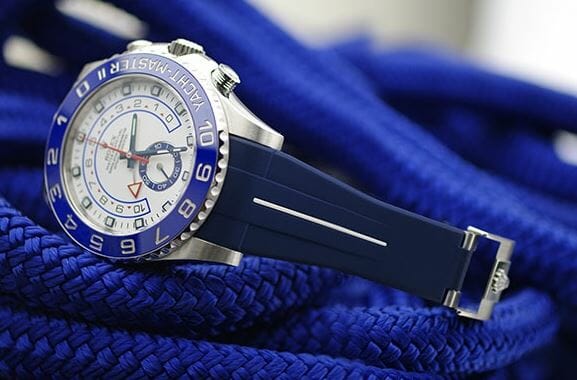
Rubber has been around for quite some time. However, the early excitement of utilizing rubber was tainted by the issues of pure rubber – it would freeze and crack in the winter, and it would melt and become sticky when exposed to the summer heat. Nathaniel Hayword and Friedrich Ludersdorf discovered that by adding sulfur to pure rubber, it would eliminate stickiness.
However, in 1839, Charles Goodyear, famously linked to the name well-known Goodyear Tire and Rubber Co., elaborated on Hayword’s discovery by developing the vulcanization process, where rubber could be heated by a stove and charred, producing a perfectly cured leather-like substance (yet, in many ways, superior to leather). The word “vulcanize” comes from the Roman god of fire, Vulcan. By heating rubber to a specific temperature and then removing it from the heat at the exact right point in time, the rubber would become vulcanized.
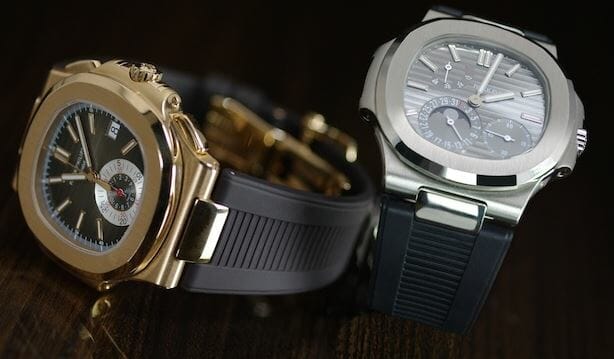
The resulting vulcanized rubber substance became extremely strong, weatherproof, and elastic. Sulfur is an accelerator, which combines and creates bridges in the molecules, allowing natural rubber to be transformed into a substance which can be expertly molded while keeping its shape – free of swelling or melting in spite of hot or cold temperatures. Later enhancements to vulcanized rubber include adding carbon black or zinc oxide to retard deterioration caused by oxygen and ozone.
Vulcanized rubber has several advantages over most any substance in the world. It has excellent strength and resilience and easily returns to its original intended shape after bending. It resists wear and tear and oxidation. It repels fats, oils and other solvents, while also limiting water absorption. It has a wide temperature range making it flexible and reliable between −80 °C to +250 °C and won’t break down until it hits temperatures above 350 °C.
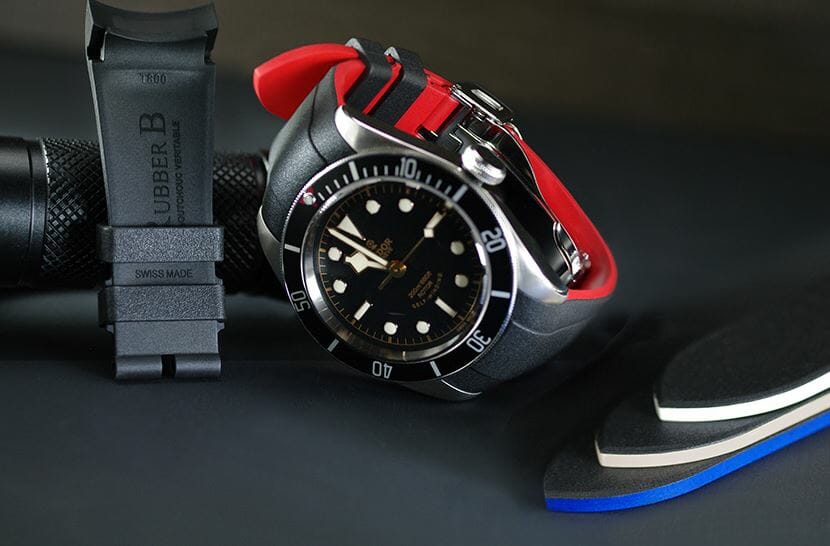
The watchmaking industry first began adding rubber bands to their timepieces in the 1950’s. Rolex, Tudor, IWC and Blancpain were some of the early timepieces found with rubber bracelets. However, it wasn’t until the 1960’s that the use of rubber bands became mainstream, largely due to its usefulness on diver and sports watches. It’s weather and water proof qualities were perfect for watch owners with an active lifestyle. The Swiss watchmaking industry adopted and perfected the use of vulcanized rubber bands as an extension to its artistry. Bands are designed with many colors, even bright colors like orange, red and yellow – enhancing the palette of what is possible.
History of Vulcanized rubber bands have exceptional properties that make them superior bracelets for fine timepieces. They are lightweight, compared to steel or gold watchbands. Not only are they waterproof in both fresh and saltwater, but they feel lighter when being worn in water – making them a perfect complement to a diver or nautical timepiece. They are durable and resistant to the effects of sunlight and radiation and they do not rust. They clean easily, are non-toxic and non-allergenic.
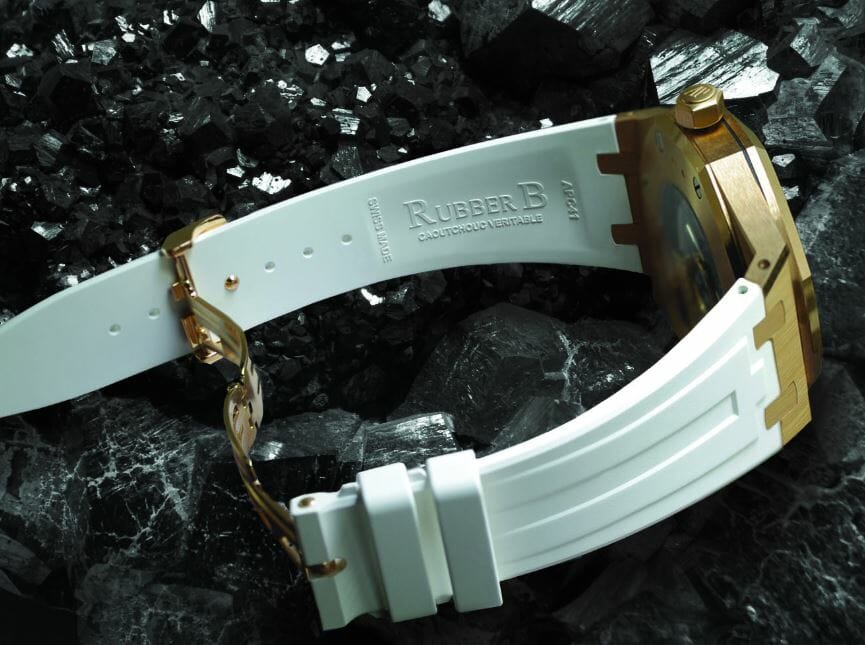
Rubber bands are easy to fit and adjust and generally can be worn by both men and women of any wrist size, universally. They are comfortable to wear and can be designed to fit the deployant buckle of the manufacturer. Vulcanized rubber bands are scratch resistant and are a low-cost (and in many ways a superior) alternative to steel and gold bands made by the manufacturer.
Probably the most important feature of vulcanized rubber bands is the stylish qualities. Vulcanized rubber can be forged into millions of beautiful designs and patterns. They can utilize the blues, blacks, and browns of the boardroom, or the fun colors of spring and summer, giving each timepiece an endless supply of stylish adaptability. Since it is easy to change a band, a timepiece owner might have a collection of different color rubber bands and be able to adapt the look of their timepiece in minutes.
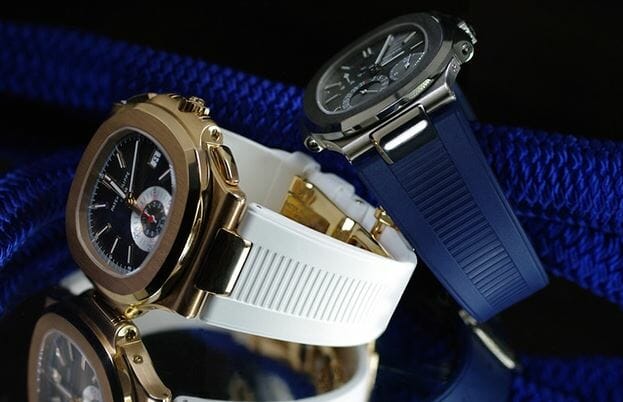
Rubber B has expanded upon the Swiss Vulcanized Rubber bracelet tradition by developing several enhancements of their own. Rubber B developed “Blocked Integration” which creates a tight, motionless, rotationless, and gap-free mount to the watch head. Rubber B has strengthened their straps by infusing carbon fiber molecules into the vulcanized rubber – thus reducing stress while maintaining supple, flexible comfort around the wearer’s wrist. Rubber B has combined industrial strength Velcro Alfatex and Titanium-Enforced loops to create unique rubber bands utilizing a powerful Velcro clasp. For more information, visit our product pages for a wide variety of vulcanized rubber bracelets made for an active and stylish lifestyle.
